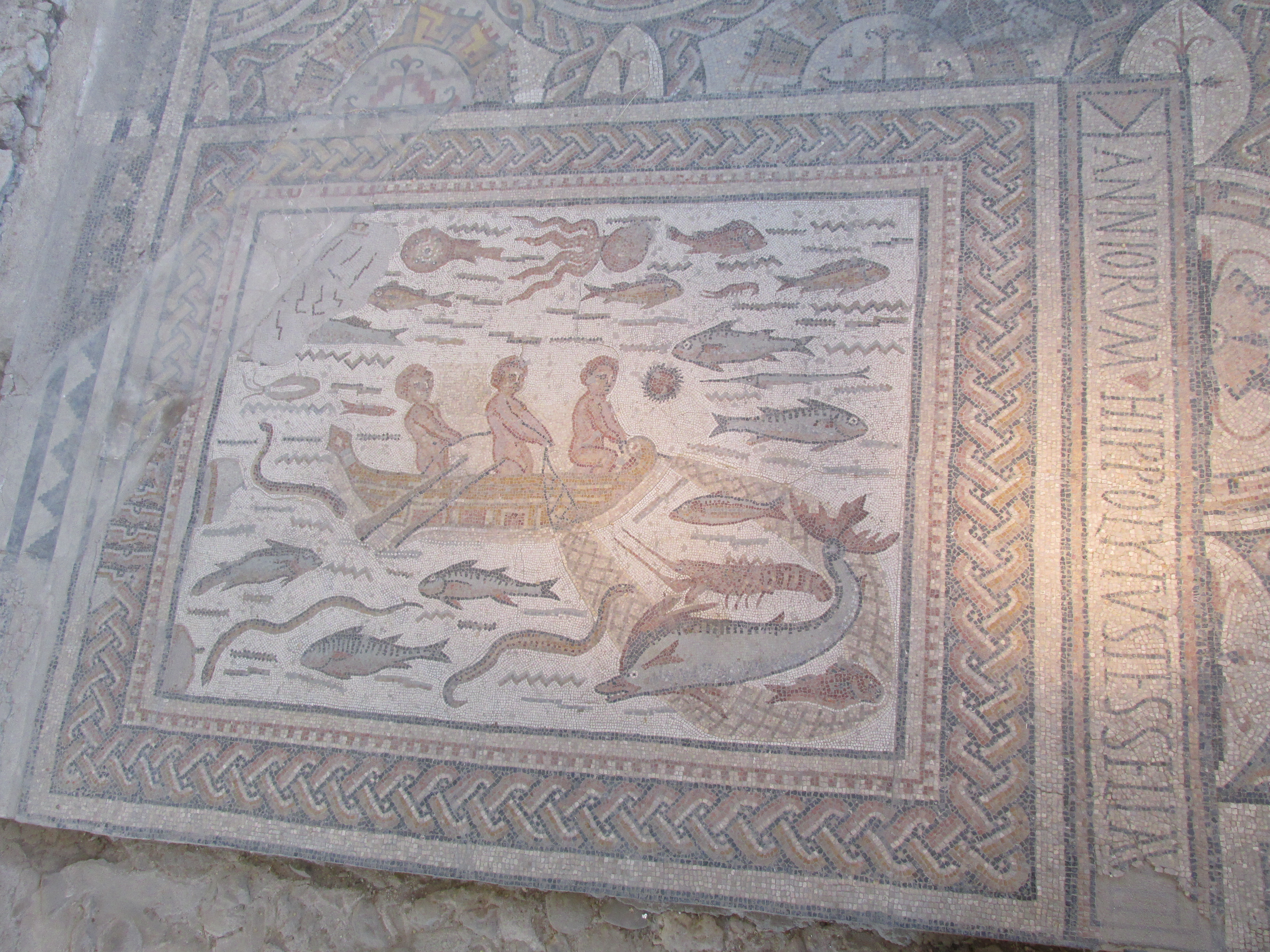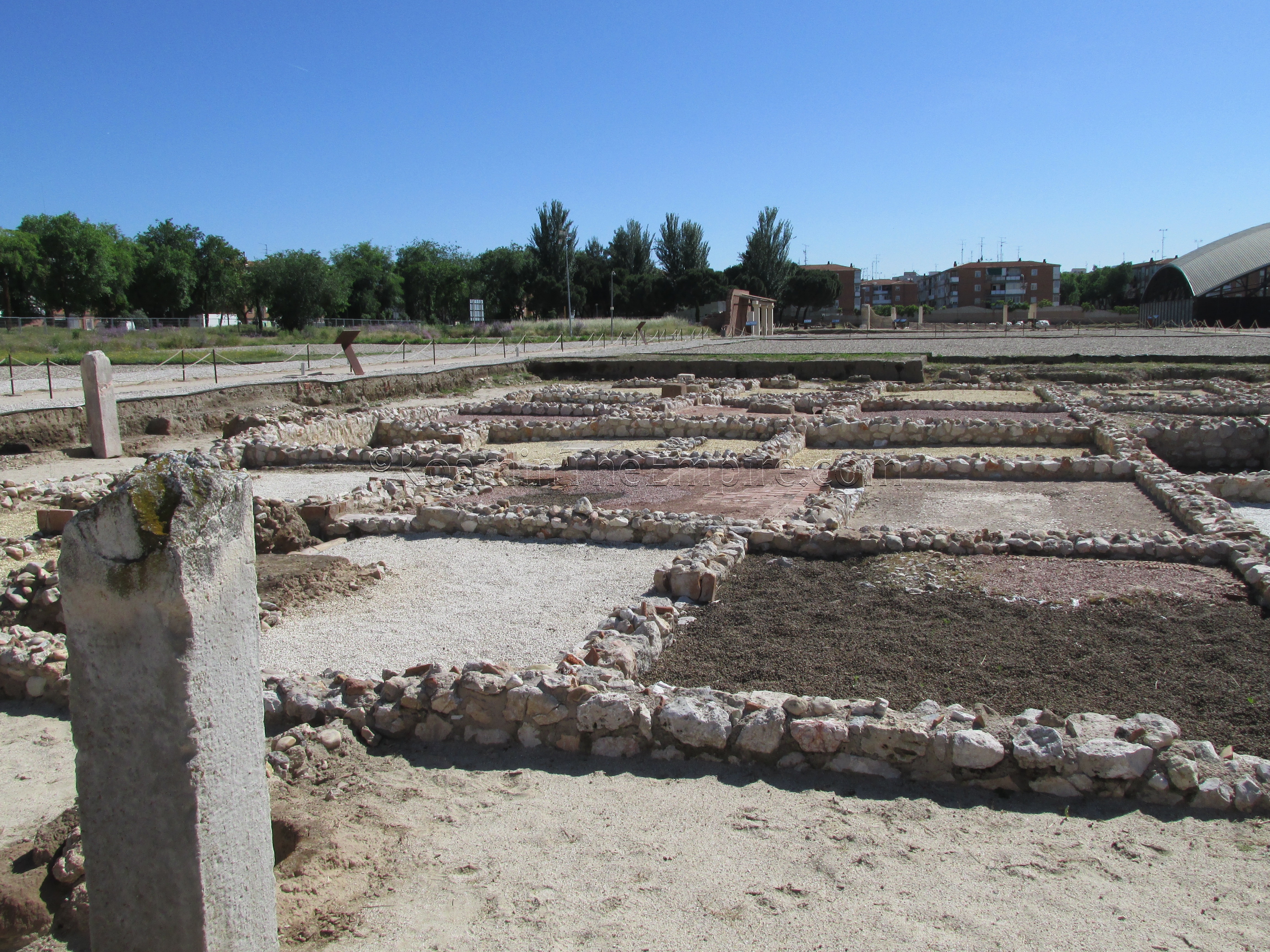
Most Recent Visit: June 2016
Quick Info:
Address:
Casa de Hippolytus
Av. Madrid, s/n
32315 Alcalá de Henares, Madrid
Hours:
Tuesday-Friday 10:00-14:00
Saturday-Sunday 10:00-14:00, 16:00-19:00
Monday Closed
Admission: Free
Complutum, located in the modern city of Alcalá de Henares, doesn’t seem to have featured much in the historical record other than a reference by Pliny the Elder to the Complutenses people, who had Roman citizenship rights and inhabited the vicinity of the Iberus River (Ebro) in Hispania Citerior. The area was originally the site of a settlement of the Carpenti, a Celtiberian people who populated the region starting in the 3rd and 2nd centuries BCE. The Carpenti settlement was probably originally situated on the nearby San Juan del Viso Hill. There doesn’t seem to have been any major actions against the city by the Romans in their conquest of Hispania, but rather the people became gradually Romanized as the Roman influence solidified in the region.
During the reign of Augustus, the settlement, now a firmly Roman possession, was moved from San Juan del Viso Hill and Complutum was founded in the Henares River valley as an orthogonally planned Roman settlement. A second major stage of building and planning took place sometime in the 60’s CE. Around 74 CE, the city was granted Latin rights and became a municipium, probably with the name of municipium flavius complutensis. Complutum remained continuously inhabited through the end of the Roman era and until the Moorish invasions of the 8th century CE.
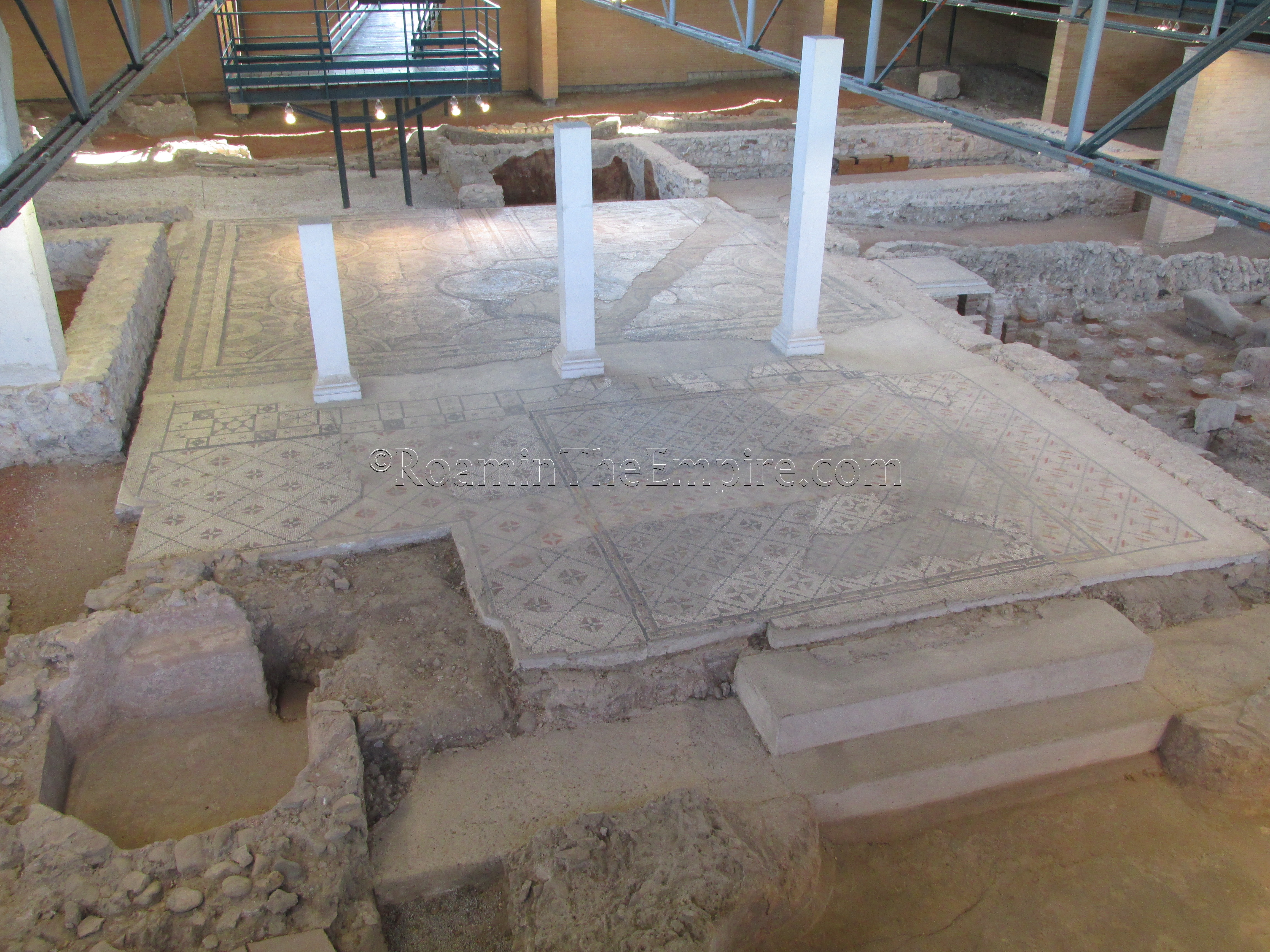
Getting There: Alcalá de Henares is easily reachable from Madrid via the Madrid Cercanías commuter rail system. From Atocha station, one can take either the green C-2 line, in the direction of Guadalajara, or the red C-7 line, which terminates at the Alcalá de Henares station. The C-2 line runs more often and starts earlier. Between the two, you won’t wait more than 15 minutes for a train, and possibly as little as 5 minutes between trains during peak hours. The journey takes about 35 minutes, and the return trains to Madrid are just as frequent. The price for a ticket is 2.60 Euro each way. I did not actually take the rail to the Alcalá de Henares station, though, which is in the center of the town. Instead I got off at the La Garena station, the stop before Alcalá de Henares. The reason for this was, the archaeological park sites are only open between 10:00 and 14:00 from Tuesday to Sunday (though hours are extended with a 16:00-19:00 block on weekends), and are closer to the La Garena station than the Alcalá de Henares station. The archaeological museum is closer to the Alcalá de Henares, and is open from 11:00 to 19:00. Combined with the later opening time of the museum, and the shorter duration of hours for the two archaeological sites, I thought it made more sense to visit the sites first. Not to mention that in the summer, an afternoon would be much better spent indoors than outdoors.
There are three primary things to see in Alcalá de Henares related to the city of Complutum: the Casa de Hippolytus, the Compltum Ciudad Romana archaeological park, and the Museo Arqueológico Regional de la Comunidad de Madrid. There is also the Villa Romana del Val (find location of the Auriga mosaic) and Visigoth necropolis site in the eastern portion of the city, but, despite articles claiming the site is indeed open, there doesn’t seem to be any actual entrance or much to see from the street, so I did not make the journey out to try and see it.
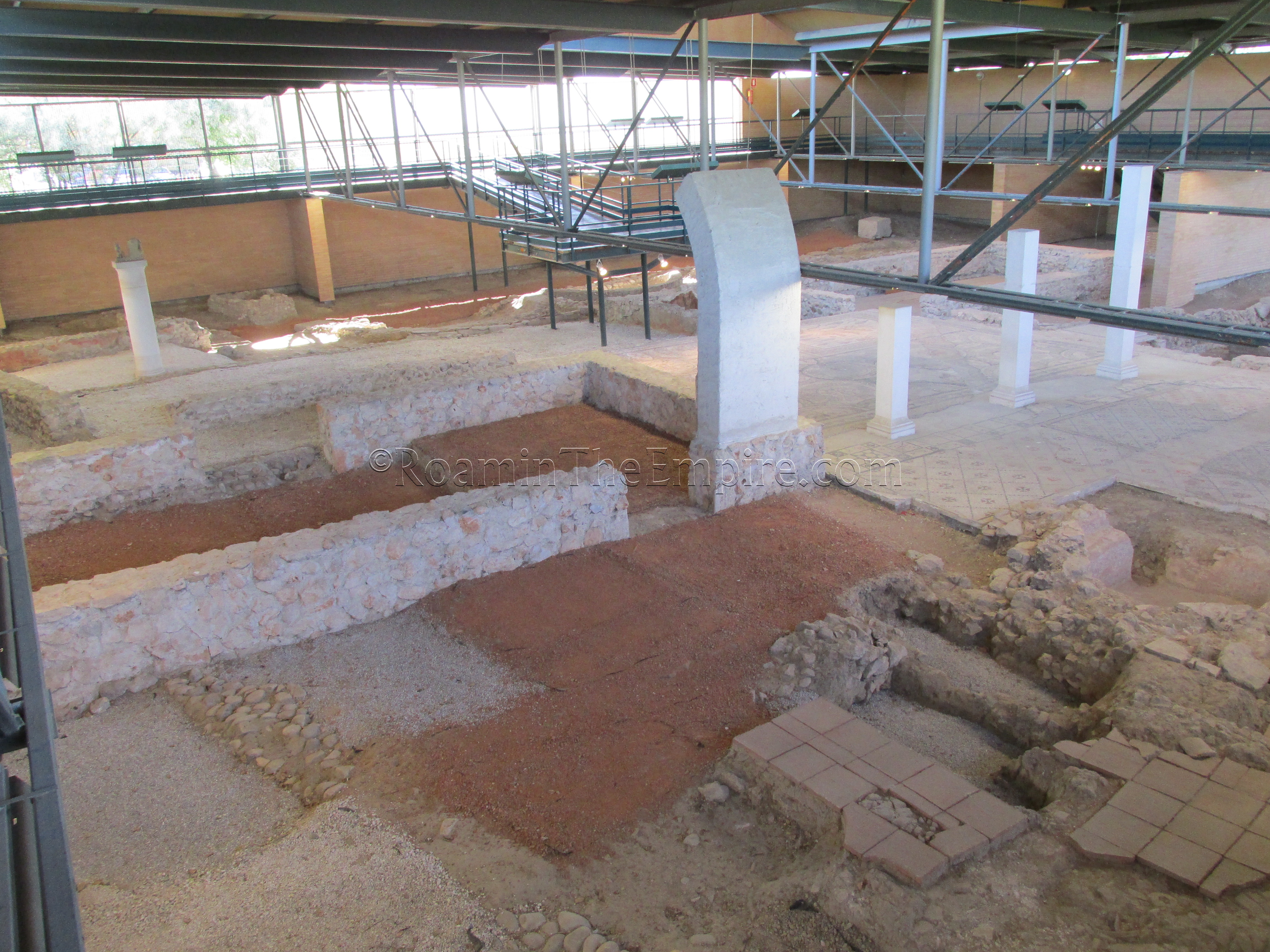
The Casa de Hippolytus was my first stop for the day. The actual site is only about 500 meters south of the La Garena stop. If you exit the La Garena stop to the south (you’ll have to use the subterranean exit, as you must go under the tracks; if you exit and see the roundabout, turn around and go the other direction), the road that continues on south/southeast will take you right to the site. The road continues for about half a kilometer and ends at a cross street (Av. de Madrid), across which is the Casa de Hippolytus.
Despite the name, the Casa de Hippolytus did not seem to be a private domestic dwelling, but is rather surmised to have been a collegium iuventutis, with the majority of construction seeming to have been done during the 3rd century CE. As previously discussed, the hours of operation for this site are 10:00-14:00 from Tuesday to Sunday, but includes an extra few hours of admission from 16:00-19:00 on Saturdays and Sundays. The Casa de Hippolytus is closed on Mondays. Admission to the site is free.
The presentation at the Casa de Hippolytus is very well done. The whole of the building is contained beneath a roofed structure with raised platforms running along the edges of the structure. Detailed informational placards, placed frequently along the course, in both English and Spanish detail the use and construction history of the rooms, as well as provide plans to help understand the orientation of your current location with respect to the rest of the building. I’m not sure what I was expecting, but it certainly exceeded my expectations by quite a bit. It is a very well put together site.
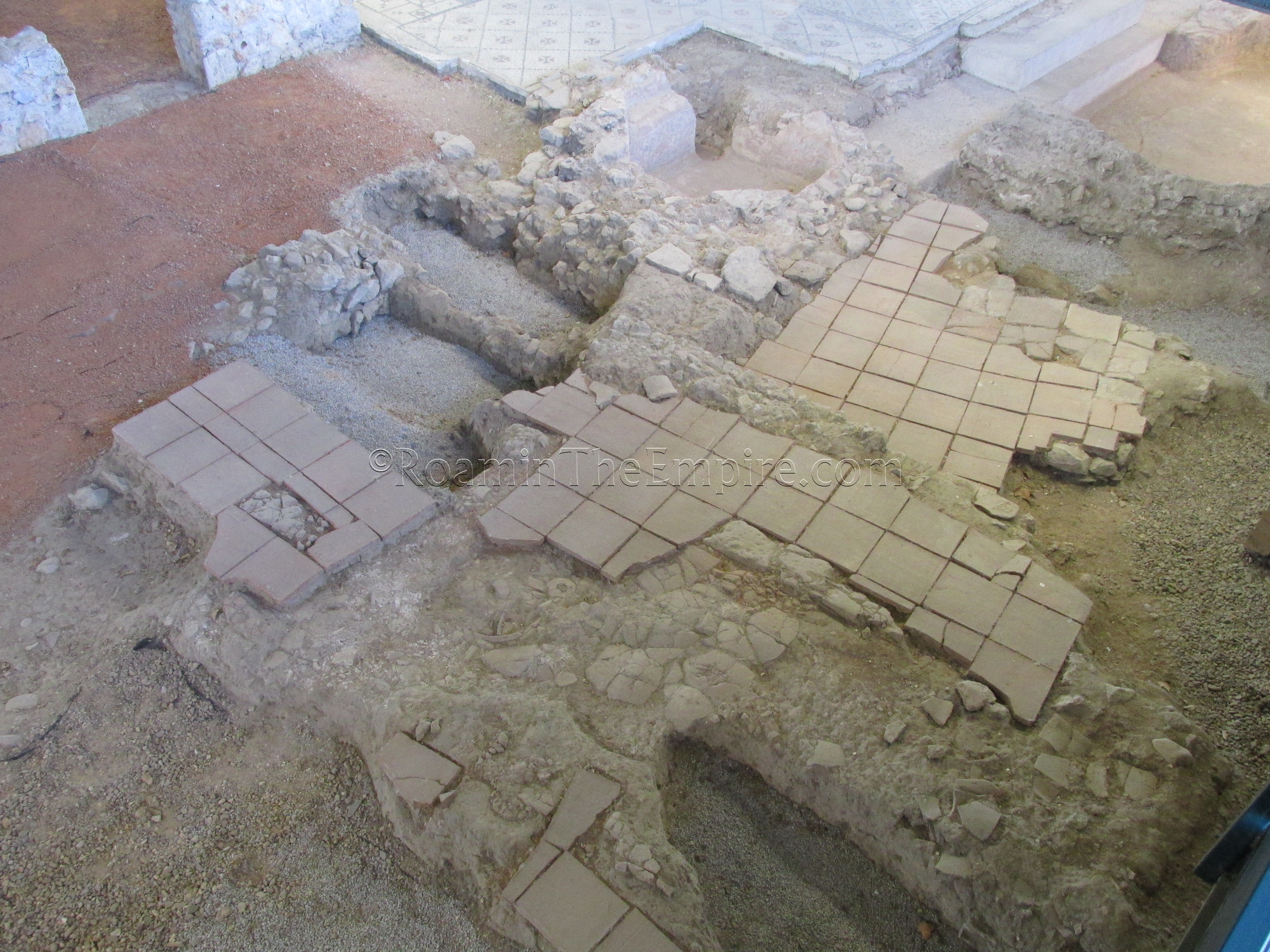
While not very large, the remains include a portico and terrace, parts of a bathing complex, a hall, and a garden area. The hall, which is the first room encountered when entering, is interesting in that it contains a partial reconstruction of a tubuli fictile arch that was used in the room. In front of the hall are the remains some 1st century CE tabernae. Next to the hall is terraced area in which the chambers of burials from the 5th and 6th centuries can be seen.
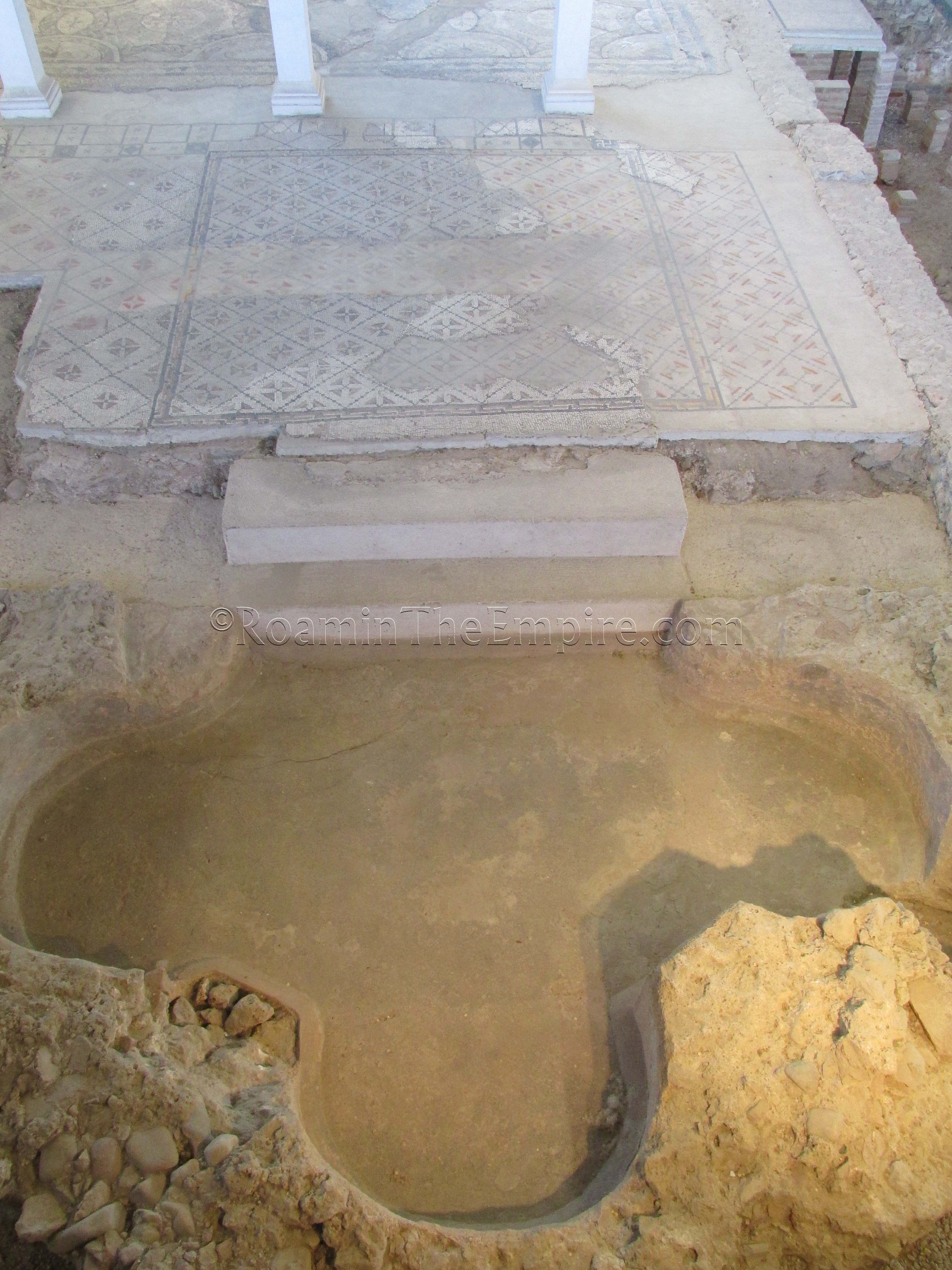
The central portion of the archaeological area contains a large mosaicked patio that probably functioned as a frigidarium for the bathing complex area. The western portion of the frigidarium has a geometric mosaic and leads into what is described as a trilobed pool, which was enclosed in a dome, and the function of which is not completely clear.
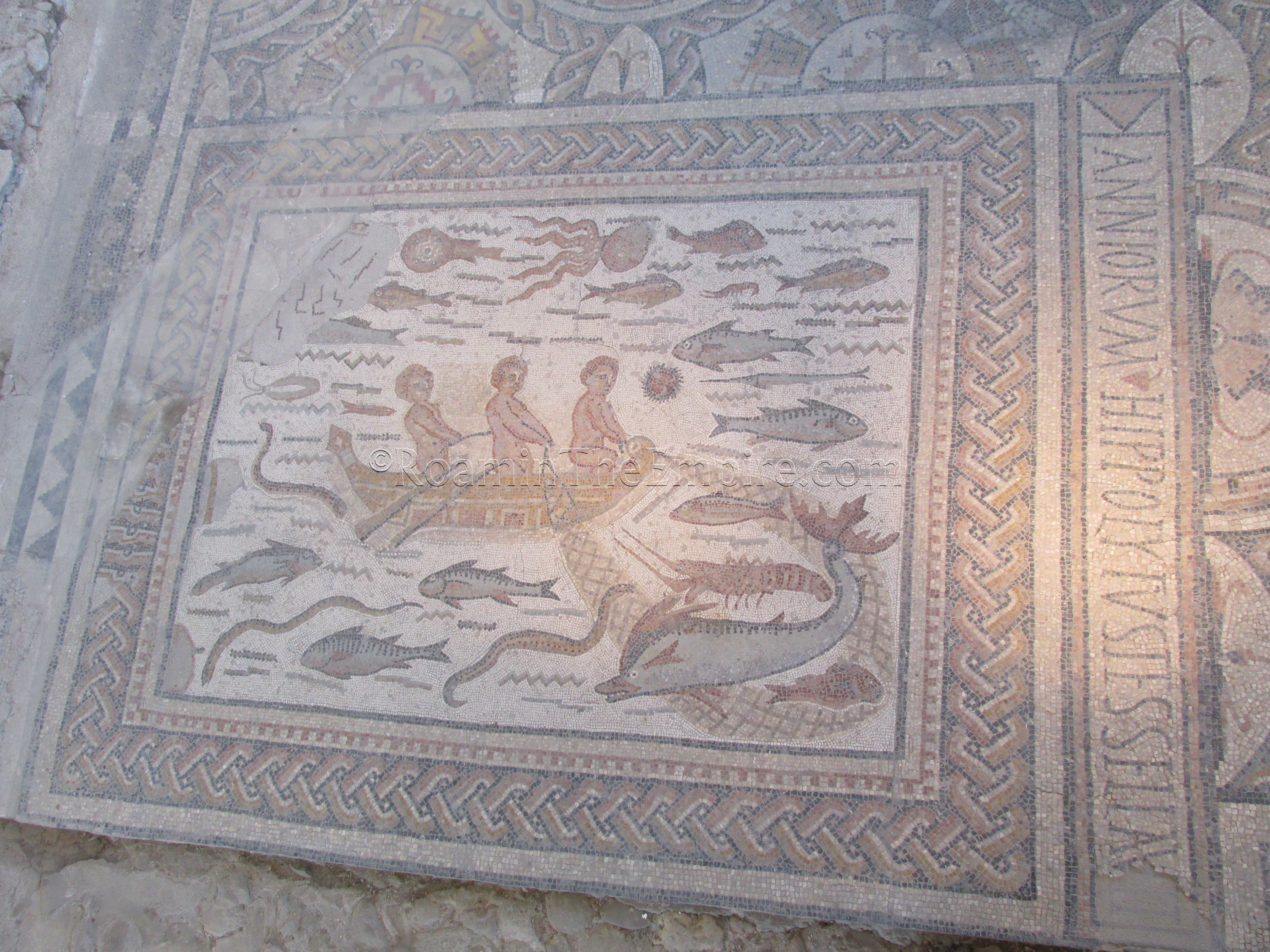
The eastern portion of the frigidarium contains the Hippolytus mosaic for which the site is named. The majority of the area is covered in a similar, but different, geometric mosaic, but a section in front of the cold pool is covered in North African style fishing mosaic. On one side of the fishing scene, the mosaic is ‘signed’, identifying the creator of the mosaic as Hippolytus, probably from Africa Proconsularis, and the patrons of the building as the Annios family, who also had a nearby mausoleum that is no longer exposed.
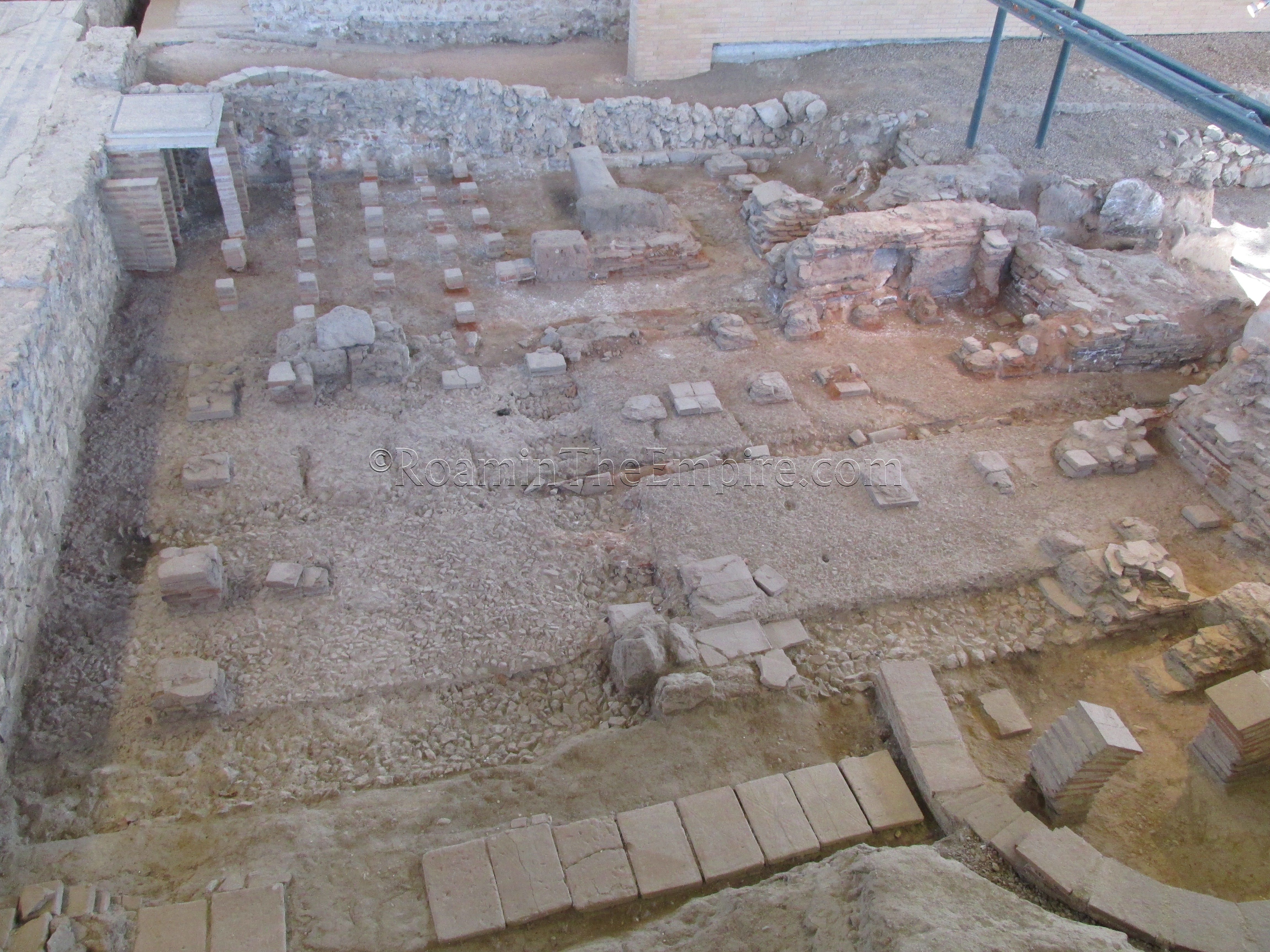
South of the frigidarium are the hot rooms and the latrine. Though the delineation is not exceptionally obvious, the area of the hot rooms, marked by the presence of hypocaust pilae, is divided into the caldarium on the east side and the tepidarium on the west side. Further south, on the other side of the walkway, is the praefurnium that heated the two rooms. Further east of the caldarium is the latrine, which has some remaining mosaic and a few seat reconstructions.
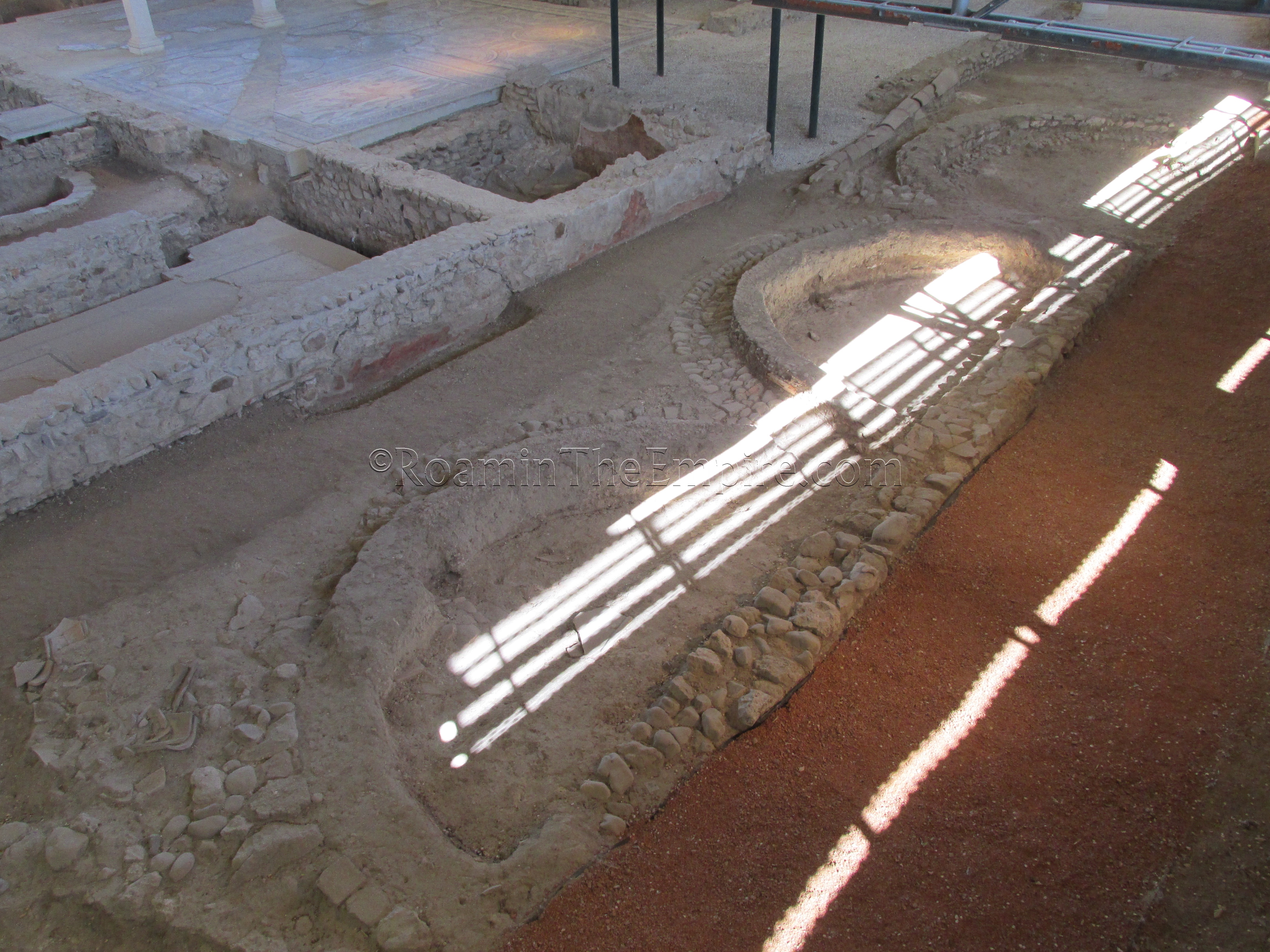
On the far eastern side of the site is the oriental garden, which is most clearly visible through the series of exedrae that served as bench areas. The oriental garden exedrae were likely a meeting area for members of the collegium and is estimated to have seated between 60 and 90 people.
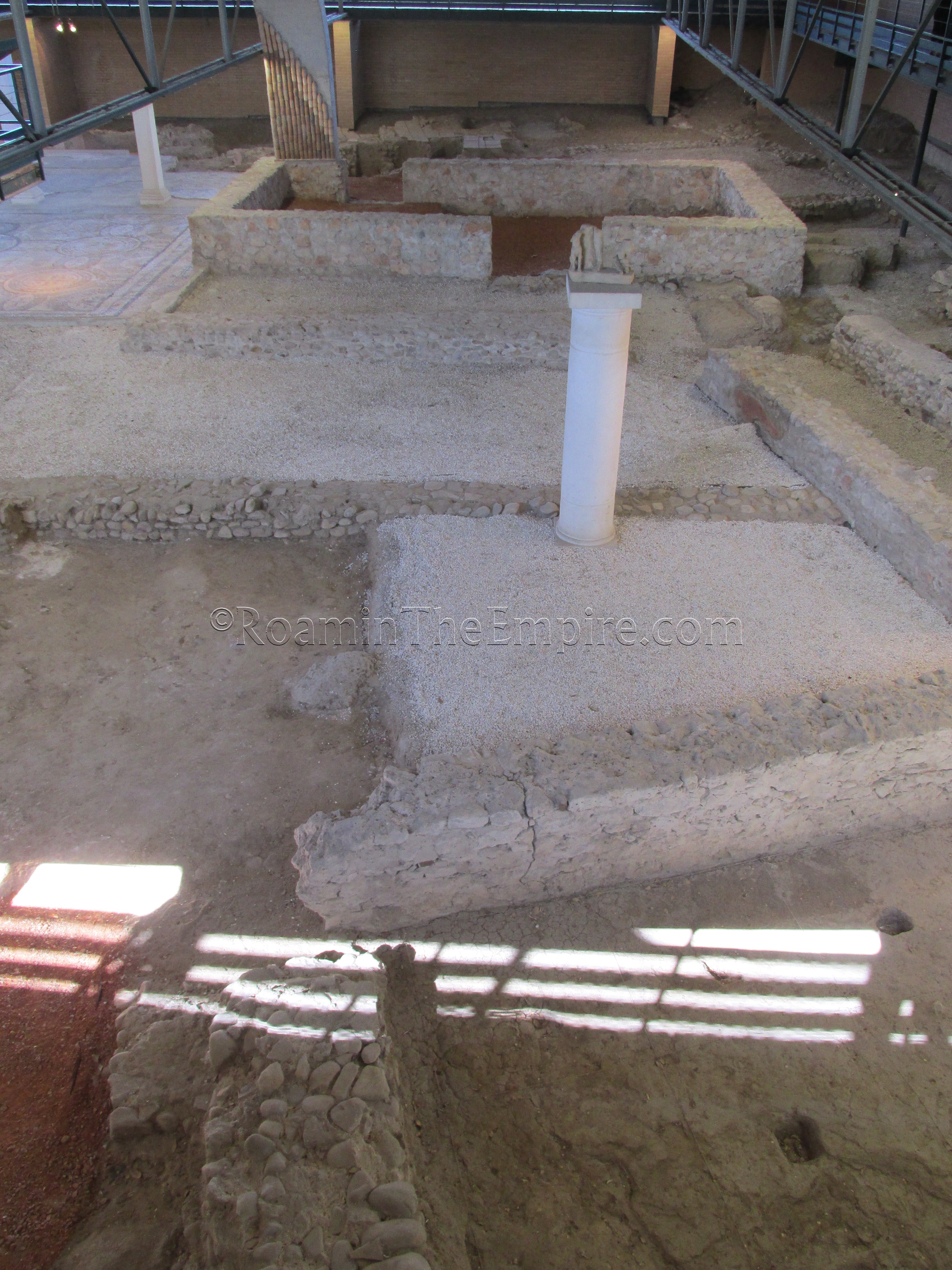
North of the oriental garden is the sacred area. It is believed to have been a cave-like structure devoted to Diana and Hercules, two divinities associated with the collegium iuventutis. A partial statue of Diana was also found in that area, a copy of which now stands on a reconstructed column in this sacred area.
Next update, Part II will include the archaeological park and museum.
Sources:
Pliny the Elder, Naturalis Historia, 3.4
Site placards.



